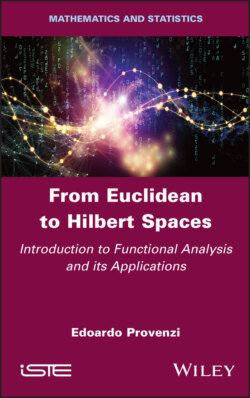Читать книгу From Euclidean to Hilbert Spaces - Edoardo Provenzi - Страница 10
Оглавление
Preface
This book provides an introduction to the key theoretical concepts associated with Hilbert spaces and with operators defined over these spaces.
Our decision to dedicate a whole book to the subject of Hilbert spaces stems from a simple observation: of all the infinite dimensional vector spaces, Hilbert spaces bear the closest resemblance to finite dimensional Euclidean spaces, that is, ℝn or Cn, which provide the framework for classical analysis and linear algebra.
The topological subtleties which come into play when using infinite dimensions mean that certain conditions (which are always verified in finite dimensions) must be posed in order to maintain the validity of known results from Euclidian spaces. For Hilbert spaces, one of these topological conditions is completeness, that is, any Cauchy sequence must converge in the space in which it is defined.
From this perspective, the theory of Hilbert spaces may be seen as an elegant conjunction of algebra, analysis and topology. It draws on the work of some of the great mathematicians of the early 20th century, including Riesz, Banach and, evidently, Hilbert, who established the conditions needed to extend classical algebra and analysis into infinite dimensions.
One particularly important linear operator, the Fourier transform, appears on multiple occasions throughout this book. We start by examining the properties of this transform in finite dimensions, with the discrete Fourier transform, before extending it to infinite dimensions, considering the use of this operator in a range of different domains, including signal and image processing.
A clear understanding of the concepts introduced in this book is essential for mathematicians, physicists or engineers hoping to progress in any field, whether applied or theoretical. These concepts provide access to tools and techniques developed over a particularly rich, creative period in the history of mathematics, which remain relevant for both pure and applied forms of the subject.
The author would like to thank Olivier Husson for his assistance in producing the majority of the figures included in this book.
April 2021
